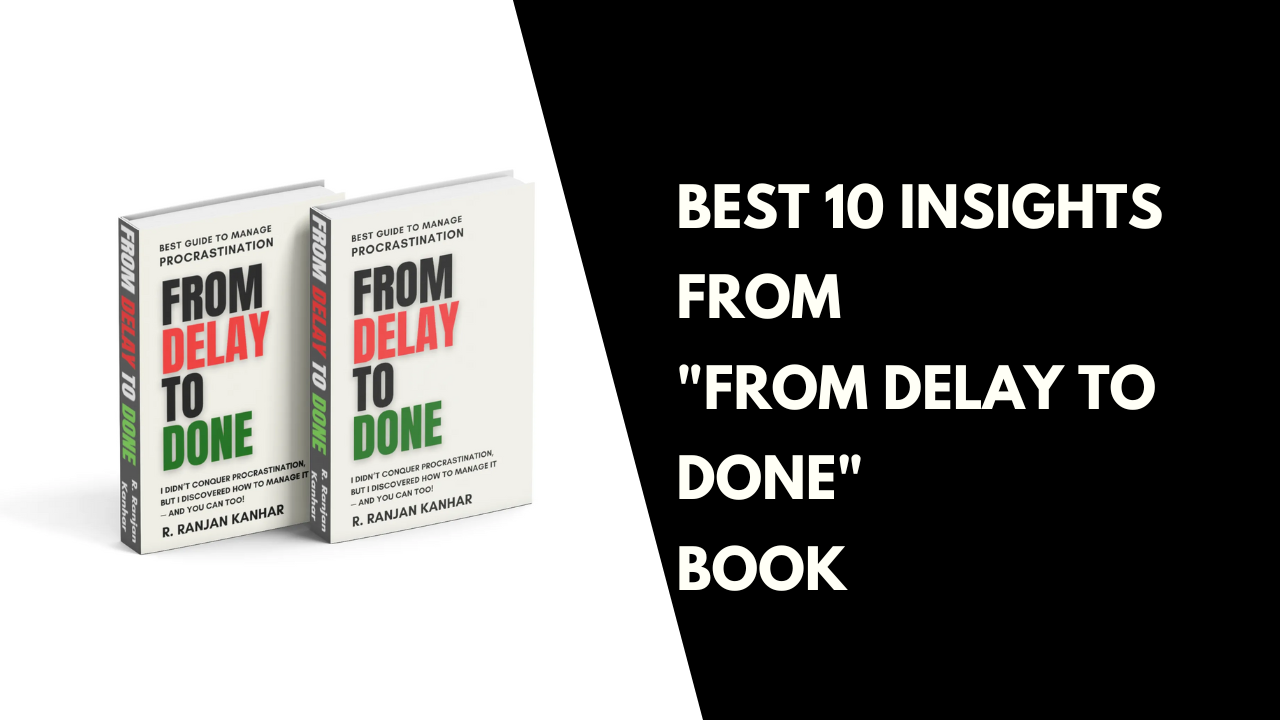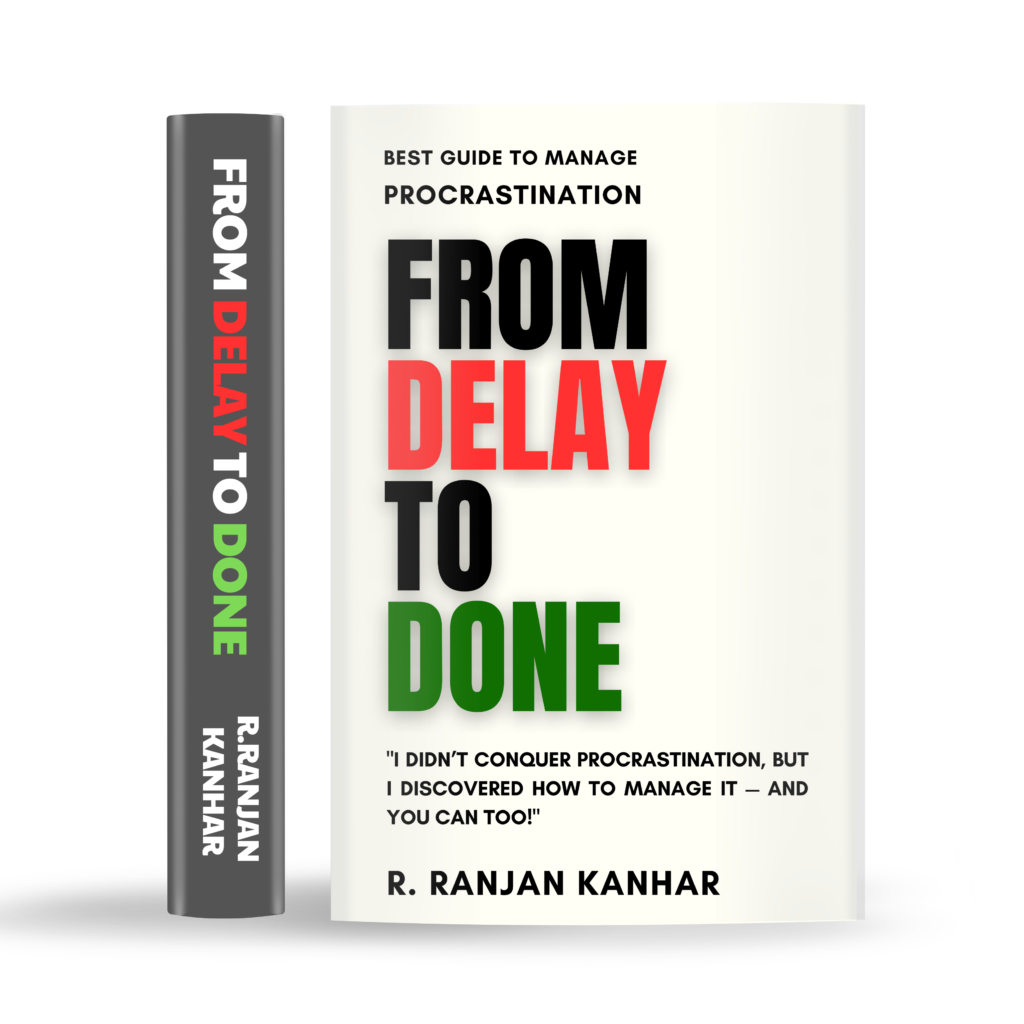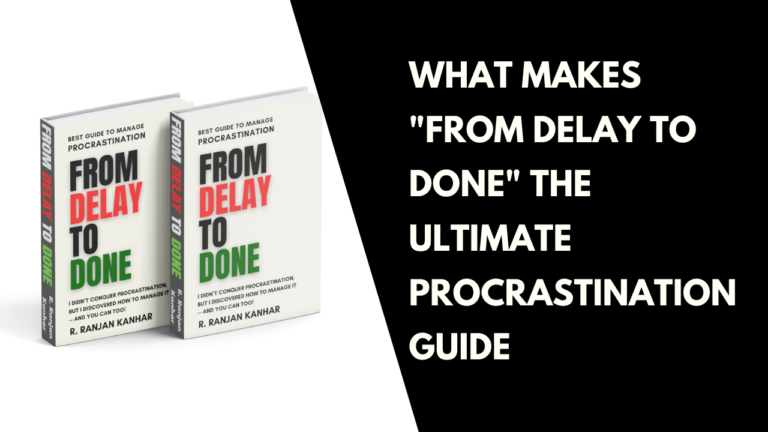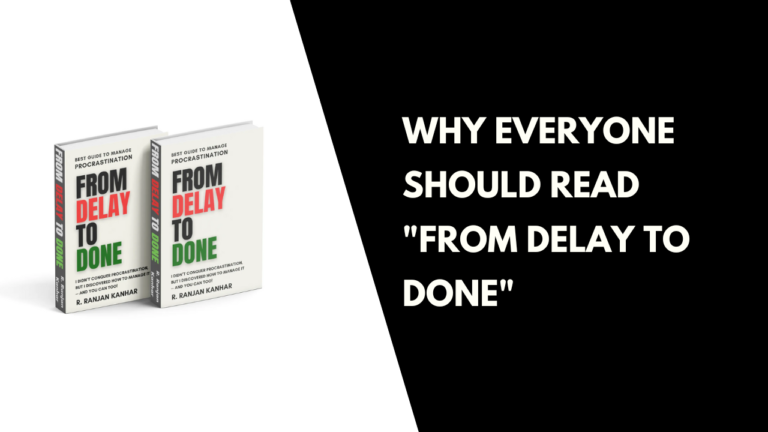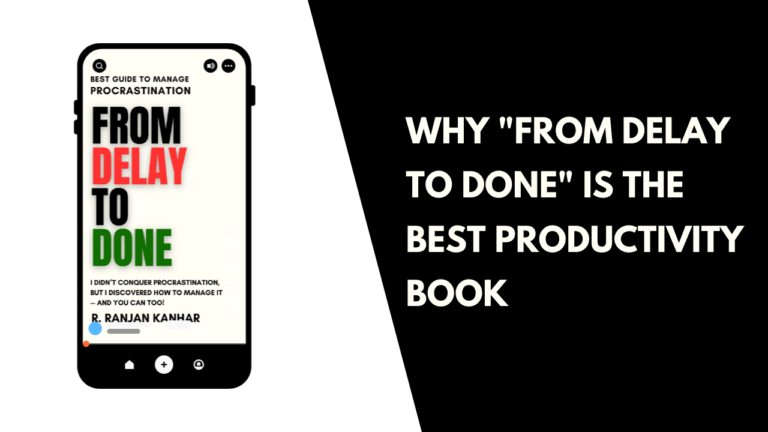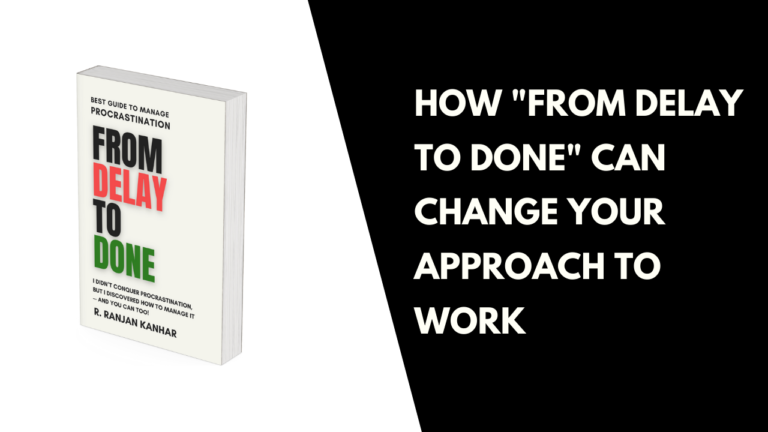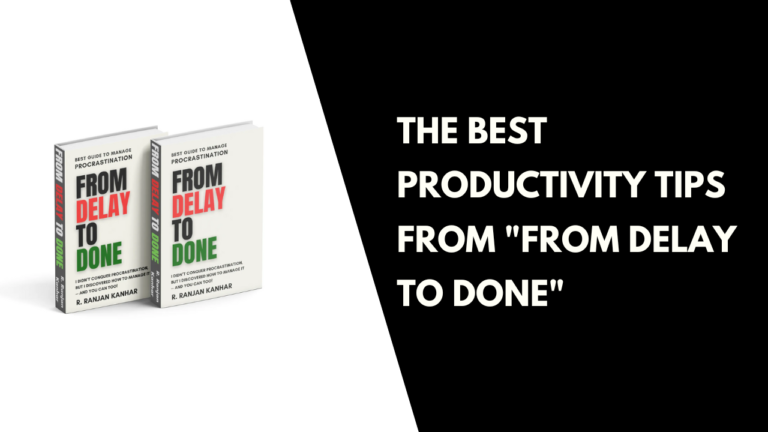Best 10 Insights from “From Delay to Done” to Stop Procrastinating
Best 10 Insights from “From Delay to Done” to Stop Procrastinating
Procrastination affects nearly everyone at some point. It can sabotage productivity, increase stress, and prevent you from reaching your goals. Fortunately, R. Ranjan Kanhar’s book, From Delay to Done, offers practical and actionable advice to help you take control of your time and finally stop procrastinating. Below, we explore the top 10 insights from the book, breaking them down step by step with detailed descriptions, subpoints, and examples. Let’s dive in!
Table of Contents
Toggle1. Introduction – Insights from From delay to done
What the Book is About: From Delay to Done is a comprehensive guide designed to help readers overcome procrastination using strategies rooted in psychology, personal experience, and practical tools. It doesn’t just address the “why” of procrastination but focuses on actionable steps to conquer it.
Purpose of this Blog: In this article, we will uncover the best 10 insights from From Delay to Done that can transform your habits and help you stop procrastinating. Each insight is simple to implement, yet profoundly effective.
2. Insight #1: The Power of Starting Small
Concept: Many procrastinators feel overwhelmed by the size of a task. One of the key insights from From Delay to Done is to start small. Even the tiniest action can break inertia and create momentum.
Detailed Steps:
Break large projects into bite-sized pieces. For instance, instead of writing a 10-page report, commit to drafting the introduction.
Focus on progress, not perfection. Small wins build confidence.
Example: If you’ve been avoiding cleaning your room, start by organizing just one drawer. Once you’ve begun, you’ll likely find the motivation to keep going.
3. Insight #2: Identify Your Triggers
Concept: To stop procrastinating, you must first understand why you’re delaying tasks. Triggers are often rooted in fear, distractions, or lack of clarity.
Detailed Steps:
Reflect on situations where you tend to procrastinate.
Identify patterns or emotions associated with those moments (e.g., fear of failure or perfectionism).
Address these triggers directly by planning ahead or reframing your mindset.
Example: If you procrastinate on presentations due to fear of public speaking, start by practicing in front of a mirror or a trusted friend to build confidence.
4. Insight #3: The 5-Minute Rule
Concept: The 5-minute rule is one of the simplest yet most effective insights from From Delay to Done. It involves committing to work on a task for just five minutes.
Detailed Steps:
Choose a task you’ve been avoiding.
Set a timer for five minutes and start working.
Often, you’ll find it easier to continue after the initial five minutes.
Example: If you’re dreading a workout, commit to just five minutes of stretching or light exercise. Once you start, you’ll likely finish the entire session.
5. Insight #4: Prioritize Your Priorities
Concept: Not all tasks are created equal. To stop procrastinating, focus on what matters most. This involves distinguishing between urgent and important tasks.
Detailed Steps:
Use the Eisenhower Matrix to categorize tasks into four quadrants:
Urgent and Important
Important but Not Urgent
Urgent but Not Important
Neither Urgent Nor Important
Focus your energy on tasks in the first two categories.
Example: If preparing for a major client presentation is both urgent and important, allocate your prime productivity hours to it instead of checking emails.
6. Insight #5: Time Blocking and Scheduling
Concept: Effective scheduling is a cornerstone of productivity. By time-blocking your day, you allocate specific periods for focused work on particular tasks.
Detailed Steps:
Identify your peak productivity hours.
Divide your day into blocks of time for specific activities.
Avoid multitasking during these blocks to maintain focus.
Example: Schedule 9:00–10:30 AM for writing a report, 10:30–11:00 AM for emails, and 11:00–11:30 AM for a short break. This structure minimizes decision fatigue and boosts efficiency.
7. Insight #6: Overcoming Perfectionism
Concept: Perfectionism often leads to procrastination because the fear of not doing something perfectly prevents you from starting.
Detailed Steps:
Redefine success as progress, not perfection.
Focus on completing the task, even if it’s not flawless.
Remember, you can always refine or improve later.
Example: If you’re hesitant to send an email because it’s not perfectly worded, write a draft, review it once, and hit send. Action beats inaction.
8. Insight #7: Accountability Partners
Concept: Sharing your goals with someone else creates a sense of responsibility and makes you more likely to follow through.
Detailed Steps:
Find a reliable accountability partner, such as a friend, colleague, or mentor.
Set regular check-ins to update them on your progress.
Celebrate milestones together to stay motivated.
Example: If you’re trying to finish a project, agree to send your accountability partner updates every Friday. Their encouragement will keep you on track.
9. Insight #8: Rewarding Yourself for Progress
Concept: Positive reinforcement is a powerful motivator. Rewarding yourself for completing tasks makes the process more enjoyable.
Detailed Steps:
Set small rewards for accomplishing specific milestones.
Ensure the reward is proportional to the task’s effort.
Example: After finishing a challenging report, treat yourself to a favorite snack or a relaxing walk. This creates a positive association with task completion.
10. Insight #9: Learn to Say No
Concept: Overcommitment often leads to procrastination because you’re overwhelmed by too many responsibilities.
Detailed Steps:
Assess your workload before agreeing to new tasks.
Politely decline tasks that don’t align with your goals.
Example: If a colleague asks for help with a project that isn’t urgent, explain your current commitments and offer to assist later if possible.
11. Insight #10: The Reflection Process
Concept: Regular reflection helps you identify what’s working and what needs improvement. It’s a key insight from From Delay to Done for long-term success.
Detailed Steps:
Set aside time weekly to review your progress.
Celebrate successes and analyze setbacks.
Adjust your strategies as needed.
Example: Spend Sunday evenings reviewing your week. Did you meet your goals? If not, identify what held you back and plan better for the week ahead.
12. Conclusion
Recap: By applying these 10 insights from From Delay to Done, you can transform your habits and finally stop procrastinating. From starting small to reflecting on your progress, these strategies are practical and easy to implement.
Call to Action: Take the first step by choosing one insight and applying it today. To dive deeper, explore From Delay to Done for a wealth of actionable strategies.
13. CTA: Share, Comment, and Learn More
We’d love to hear about your experiences. Which of these insights resonated most with you? Share your thoughts in the comments and don’t forget to check out From Delay to Done for more practical ways to stop procrastinating!
“Stop postponing your dreams! From Delay to Done is your ultimate guide to conquering procrastination. Grab your copy today on Amazon!
